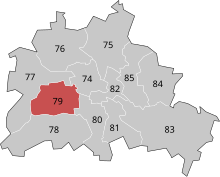
Hochtaunus is an electoral constituency represented in the Bundestag. It elects one member via first-past-the-post voting. Under the current constituency numbering system, it is designated as constituency 175. It is located in southwestern Hesse, comprising most of Hochtaunuskreis and the northeastern part of the Limburg-Weilburg district.

Berlin-Steglitz-Zehlendorf is an electoral constituency represented in the Bundestag. It elects one member via first-past-the-post voting. Under the current constituency numbering system, it is designated as constituency 78. It is located in southwestern Berlin, comprising the Steglitz-Zehlendorf borough.
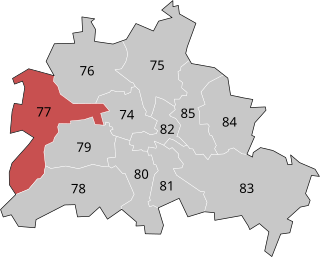
Berlin-Spandau – Charlottenburg North is an electoral constituency represented in the Bundestag. It elects one member via first-past-the-post voting. Under the current constituency numbering system, it is designated as constituency 77. It is located in western Berlin, comprising the Spandau borough.

Berlin-Reinickendorf is an electoral constituency represented in the Bundestag. It elects one member via first-past-the-post voting. Under the current constituency numbering system, it is designated as constituency 76. It is located in northern Berlin, comprising the Reinickendorf borough.

Berlin-Neukölln is an electoral constituency represented in the Bundestag. It elects one member via first-past-the-post voting. Under the current constituency numbering system, it is designated as constituency 81. It is located in southern Berlin, comprising the Neukölln borough.
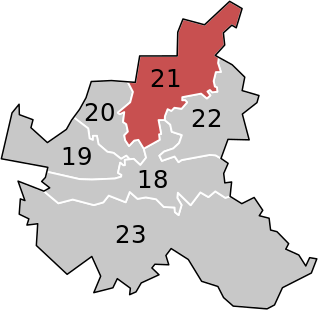
Hamburg-Nord is an electoral constituency represented in the Bundestag. It elects one member via first-past-the-post voting. Under the current constituency numbering system, it is designated as constituency 21. It is located in northern Hamburg, comprising most of the Hamburg-Nord borough and the northern part of the Wandsbek borough.
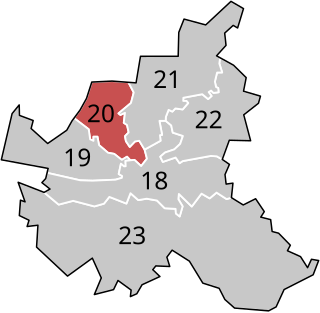
Hamburg-Eimsbüttel is an electoral constituency represented in the Bundestag. It elects one member via first-past-the-post voting. Under the current constituency numbering system, it is designated as constituency 20. It is located in northwestern Hamburg, comprising the Eimsbüttel borough.

Hamburg-Altona is an electoral constituency represented in the Bundestag. It elects one member via first-past-the-post voting. Under the current constituency numbering system, it is designated as constituency 19. It is located in western Hamburg, comprising the Altona borough.
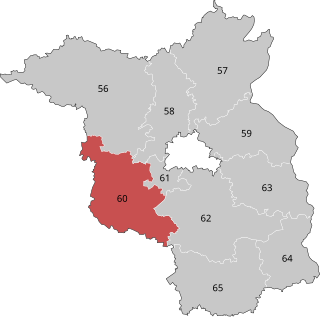
Brandenburg an der Havel – Potsdam-Mittelmark I – Havelland III – Teltow-Fläming I is an electoral constituency represented in the Bundestag. It elects one member via first-past-the-post voting. Under the current constituency numbering system, it is designated as constituency 60. It is located in western Brandenburg, comprising the city of Brandenburg an der Havel, most of the Potsdam-Mittelmark district, and parts of the Havelland and Teltow-Fläming districts.

Prignitz – Ostprignitz-Ruppin – Havelland I is an electoral constituency represented in the Bundestag. It elects one member via first-past-the-post voting. Under the current constituency numbering system, it is designated as constituency 56. It is located in northwestern Brandenburg, comprising the Prignitz district, Ostprignitz-Ruppin district, and most of the Havelland district.
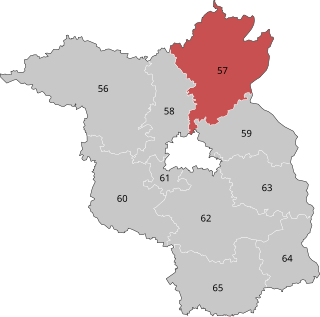
Uckermark – Barnim I is an electoral constituency represented in the Bundestag. It elects one member via first-past-the-post voting. Under the current constituency numbering system, it is designated as constituency 57. It is located in northeastern Brandenburg, comprising the Uckermark district and most of the Barnim district.

Oberhavel – Havelland II is an electoral constituency represented in the Bundestag. It elects one member via first-past-the-post voting. Under the current constituency numbering system, it is designated as constituency 58. It is located in northern Brandenburg, comprising the Oberhavel district and eastern parts of the Havelland district.

Leipzig I is an electoral constituency represented in the Bundestag. It elects one member via first-past-the-post voting. Under the current constituency numbering system, it is designated as constituency 151. It is located in northwestern Saxony, comprising the northern part of the city of Leipzig.

The 2021 Berlin state election, ruled invalid in 2022 and repeated in 2023, was held on 26 September 2021, on the same day as the 2021 German federal election, which also had to be repeated in parts of Berlin due to irregularities. Thus, the 19th Abgeordnetenhaus of Berlin was elected twice.

Frankfurt (Oder) – Oder-Spree is an electoral constituency represented in the Bundestag. It elects one member via first-past-the-post voting. Under the current constituency numbering system, it is designated as constituency 63. It is located in eastern Brandenburg, comprising the independent city of Frankfurt (Oder) and the district of Oder-Spree.

Harz is an electoral constituency represented in the Bundestag. It elects one member via first-past-the-post voting. Under the current constituency numbering system, it is designated as constituency 68. It is located in western Saxony-Anhalt, comprising the district of Harz.

Burgenland – Saalekreis is an electoral constituency represented in the Bundestag. It elects one member via first-past-the-post voting. Under the current constituency numbering system, it is designated as constituency 72. It is located in southern Saxony-Anhalt, comprising the Burgenlandkreis distinct and eastern parts of the Saalekreis district.

Dresden II – Bautzen II is an electoral constituency represented in the Bundestag. It elects one member via first-past-the-post voting. Under the current constituency numbering system, it is designated as constituency 159. It is located in central Saxony, comprising the northern and western part of the city of Dresden and a small part of the Bautzen district.

Chemnitz is an electoral constituency represented in the Bundestag. It elects one member via first-past-the-post voting. Under the current constituency numbering system, it is designated as constituency 161. It is located in western Saxony, comprising the city of Chemnitz.

Jena – Sömmerda – Weimarer Land I is an electoral constituency represented in the Bundestag. It elects one member via first-past-the-post voting. Under the current constituency numbering system, it is designated as constituency 190. It is located in north-central Thuringia, comprising the city of Jena, the Sömmerda district, and most of the Weimarer Land district.
